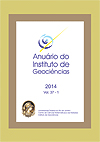MM5 and WRF Performance Analysis Through Simulation of Surface Air Temperature in MRRJ
DOI:
https://doi.org/10.11137/2014_2_161_168Keywords:
Air temperature, Statistical, WRF, MM5.Abstract
The urbanization dynamics in big cities produces a highly degraded environment with serious damages to human life quality. The Metropolitan Region of Rio de Janeiro (MRRJ) have been exposed to several anthropogenic activities that produces environmental problems, for example: the intense modification of soil cover behind the phenomenon of Urban Heat Island (UHI). This study evaluates the performance of MM5 and WRF meteorological models to simulate the near surface air temperature variable in MRRJ. The model results are compared with observational data using statistical indexes to a period of UHI occurrence. The evaluation uses the daily cycle of air temperature and statistical indexes between simulated and observed data. The result shows a satisfactory performance of both models to reproduce the daily cycle of near surface air temperature for the entire study period. A slightly tendency to underestimate the maximum temperatures were observed on simulated results, as well as an overestimate of minimum temperatures. Analyzing the statistical indexes, a similar performance between the MM5 and WRF were presented according the observed data from SBGL, SBAF, SBJR, and SBSC stations. The largest deviations between predicted and observed results occurred to SBRJ station. The analysis of temporal variation and statistical indices showed that MM5 and WRF meteorological models are able to represent the near surface air temperature both to spatial distribution as to temporal variation.Downloads
Download data is not yet available.
Downloads
Published
2017-02-15
How to Cite
Moraes, N. O., Marton, E. and Pimentel, L. C. G. (2017) “MM5 and WRF Performance Analysis Through Simulation of Surface Air Temperature in MRRJ”, Anuário do Instituto de Geociências. Rio de Janeiro, BR, 37(2), pp. 161–168. doi: 10.11137/2014_2_161_168.
Issue
Section
Article
License
This journal is licensed under a Creative Commons — Attribution 4.0 International — CC BY 4.0, which permits use, distribution and reproduction in any medium, provided the original work is properly cited.















